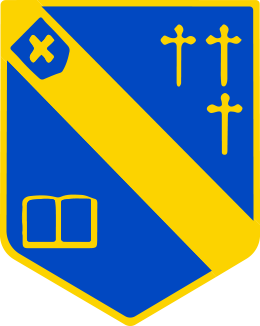
Duke of Norfolk CofE Primary School
Vocabulary Map
|
|
FOUNDATION |
Phase 1 |
Phase 2 |
Phase 3 |
|||
|
|
EYFS |
1 |
2 |
3 |
4 |
5 |
6 |
|
1a. Can you say what art you like or don’t like? |
1b. How might the work of artists inspire my own art? |
1c. How is art expressed over time and different cultures? |
1d. How can we gain a deeper understanding of significant art movements over the last century? |
|||
|
artist designer sculptor photographer
|
self-portrait |
style technique comparison renaissance impressionism pop art aboriginal art Ndebele danqing prehistoric art |
Art movement |
||||
|
2a. What colours do you know? |
2b. What are the primary, secondary and tertiary colours, and how can you lighten or darken them? |
2c. What is monochrome? |
2d. How can we use colour to convey mood or feelings? |
|||
|
red yellow blue orange green purple black white light dark
|
primary colour red yellow blue secondary colour orange purple green darker/shade lighter/tint turquoise brown colour wheel
|
tints (and some name) shades (and some names) monochrome colour temperature warm cool twelve-piece colour wheel tertiary colours |
neutral colours - brown, beige, fawn, peach, khaki, olive, camel, salmon
simile mood evoke manufacturer
|
||||
|
|
FOUNDATION |
Phase 1 |
Phase 2 |
Phase 3 |
|||
|
|
EYFS |
1 |
2 |
3 |
4 |
5 |
6 |
|
3a. What marks can you make with different tools for drawing? |
3b. How can you begin to draw things you have seen or have remembered? |
3c. How can you use different media to create different effects of shade, form, and tone to give more detail to drawings? |
3d. How do you use techniques to add greater detail and realism to drawings (such as using perspective and creating texture)? |
|||
|
draw pencil pens crayons |
shape pattern light dark observe line
|
shade media charcoal graphite outline tone variation |
surface texture hatching masking scale composition architectural drawing |
||||
|
4a. Can you begin to explore painting? |
4b. Can we experiment with a wide range of paint and painting techniques? |
4c. What tools, techniques and media can be used to create specific textures and effects in your paintings? |
4d. How can we use tools, techniques, and media to create mood in increasingly sophisticate painting? |
|||
|
brush stroke splash mix
|
daub layer drip smear water-based paint bristles ready mixed spatula |
additives colour blocking thickened paint colour wash dotting scratch techniques |
atmosphere light effects proportion perspective focal point complementary contrasting |
||||
|
|
FOUNDATION |
Phase 1 |
Phase 2 |
Phase 3 |
|||
|
|
EYFS |
1 |
2 |
3 |
4 |
5 |
6 |
|
5a. What models can you make? |
5b. Can we make a 3d model from a 2d picture? |
5c. How can we add greater detail and decoration to sculptures? |
5d. How can we use sculpture from other cultures, or specific purposes, to inspire our own work? |
|||
|
Modelling constructing joining recycled natural decorate materials
|
2D 3D recreate suitable materials junk plasticine natural objects found objects finishing
|
manipulate malleable kneading rolling clay slabs papier mache strengthen |
carve bust intricate surface texture etching precision purpose suitability |
||||
|
6. USING MATERIALS TO MAKE TEXTURE AND PATTERN(PRINTING ANDCOLLAGE) |
6a. How can we use materials to make pictures? |
6b. What materials, everyday objects, and techniques can we use to create patterns and pictures? |
6c. How can shape, direction, colour and texture be used to create realistic or abstract images or patterns? |
6d. How can we combine a wider range of materials or techniques to create a specific outcome? |
|||
|
pattern object rubbing background picture
|
Extend repeating patterns sticking layering textures Fold crumple, tear select change
|
tessellating pattern rotation clockwise half and quarter turns collage techniques tearing overlapping overlaying contrasting textures mixed media |
block rotation colour overlays incised polystyrene printing plate incised visual texture motif embellish outcome
|
||||
|
|
FOUNDATION |
Phase 1 |
Phase 2 |
Phase 3 |
|||
|
|
EYFS |
1 |
2 |
3 |
4 |
5 |
6 |
|
COLLECTING AND GENERATING IDEAS / USING SKETCHBOOKS |
ideas artist |
sketchbook visual diary record draw collect designer
|
observe imagine experience
gather visual information professional artists craftspeople architects filmmakers designers |
documenting annotate modify work investigate collate review sources photographs, digital images Compare graphic designer textile artist digital artist ceramicist illustrator
|
|||
|
REFLECTING AND EVALUATING |
like
|
challenges |
reflect compare methods techniques styles
|
evaluate
|
|||